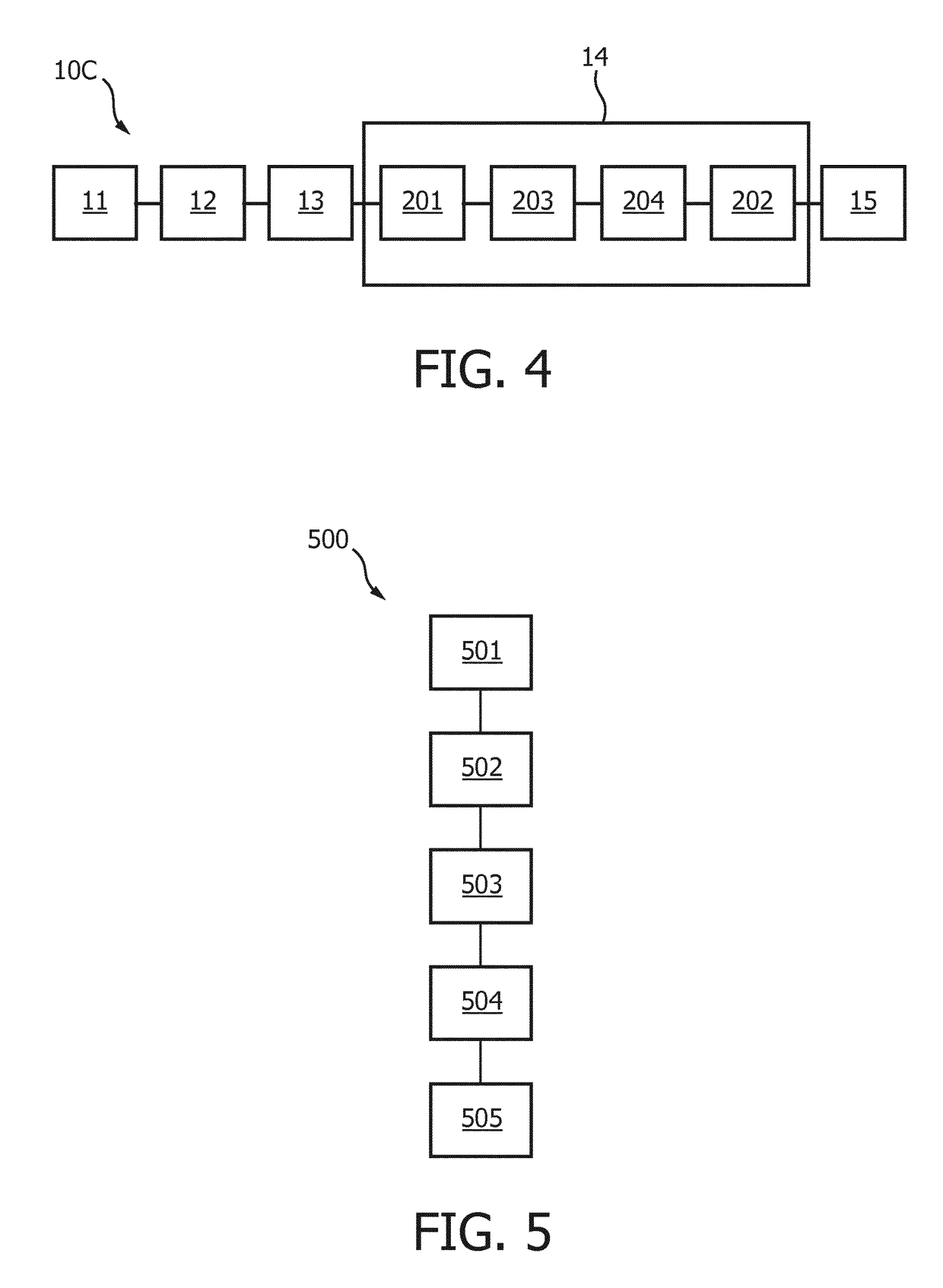Mutli-shot magnetic resonance imaging system and method
a magnetic resonance imaging and multi-shot technology, applied in the field of imaging systems and methods, can solve the problems of reducing image quality in multi-shot mr images, requiring longer acquisition times than are required for single-shot acquisitions, and reducing image quality, so as to reduce artifacts, improve image quality, and maximize similarity
- Summary
- Abstract
- Description
- Claims
- Application Information
AI Technical Summary
Benefits of technology
Problems solved by technology
Method used
Image
Examples
Embodiment Construction
[0031]FIG. 1 shows a general schematic block diagram of a magnetic resonance imaging system 10 for imaging a subject by a multi-shot imaging according to an embodiment of the present invention. The magnetic resonance imaging system 10 includes an acquiring unit 11, an imaging unit 12, a deriving unit 13, a detecting unit 14 and a reconstructing unit 15.
[0032]The acquiring unit 11 acquires MR raw data corresponding to a plurality of shots during a multi-shot imaging of a subject, e.g., a patient. During the multi-shot imaging of the subject, only a part of MR raw data is acquired for each shot and then all the MR raw data for all shots may be used to fill a k space to produce a final image.
[0033]The imaging unit 12 generates a plurality of folded images from the MR raw data, and each of the folded images is generated from partially acquired MR raw data. The partially acquired MR raw data may be considered as a subset of the MR raw data which includes a same amount of MR raw data acqu...
PUM
 Login to View More
Login to View More Abstract
Description
Claims
Application Information
 Login to View More
Login to View More - R&D
- Intellectual Property
- Life Sciences
- Materials
- Tech Scout
- Unparalleled Data Quality
- Higher Quality Content
- 60% Fewer Hallucinations
Browse by: Latest US Patents, China's latest patents, Technical Efficacy Thesaurus, Application Domain, Technology Topic, Popular Technical Reports.
© 2025 PatSnap. All rights reserved.Legal|Privacy policy|Modern Slavery Act Transparency Statement|Sitemap|About US| Contact US: help@patsnap.com



